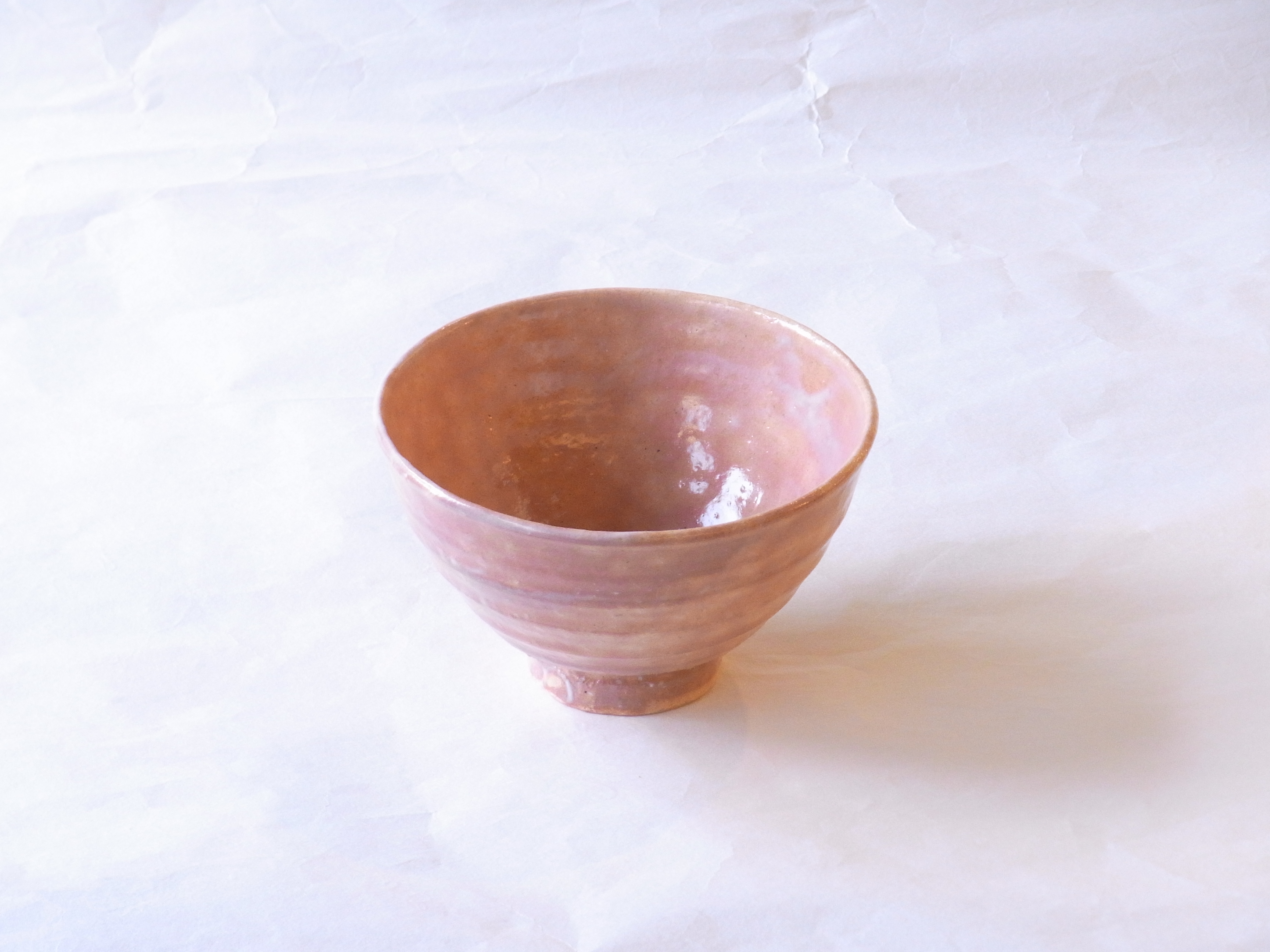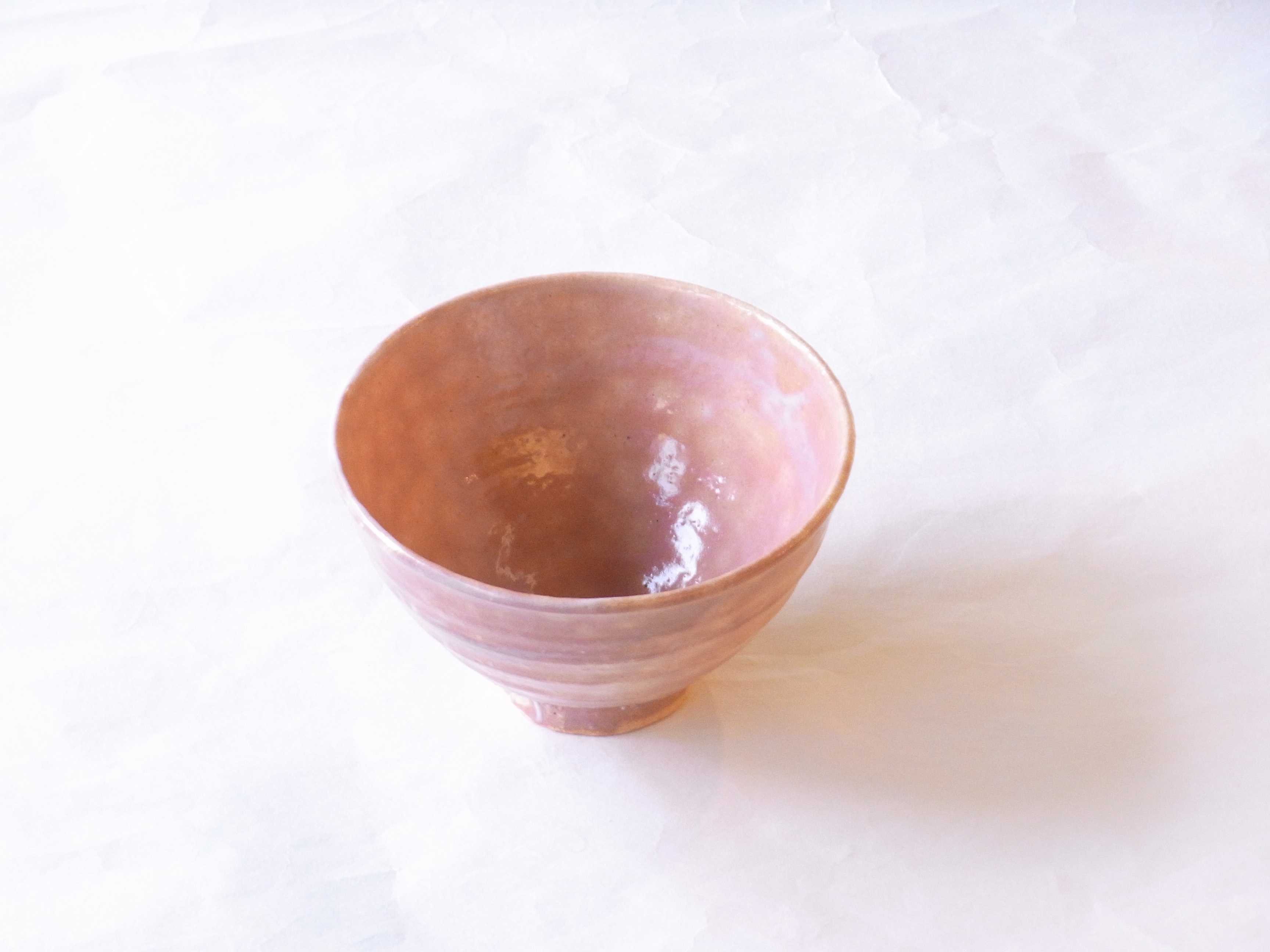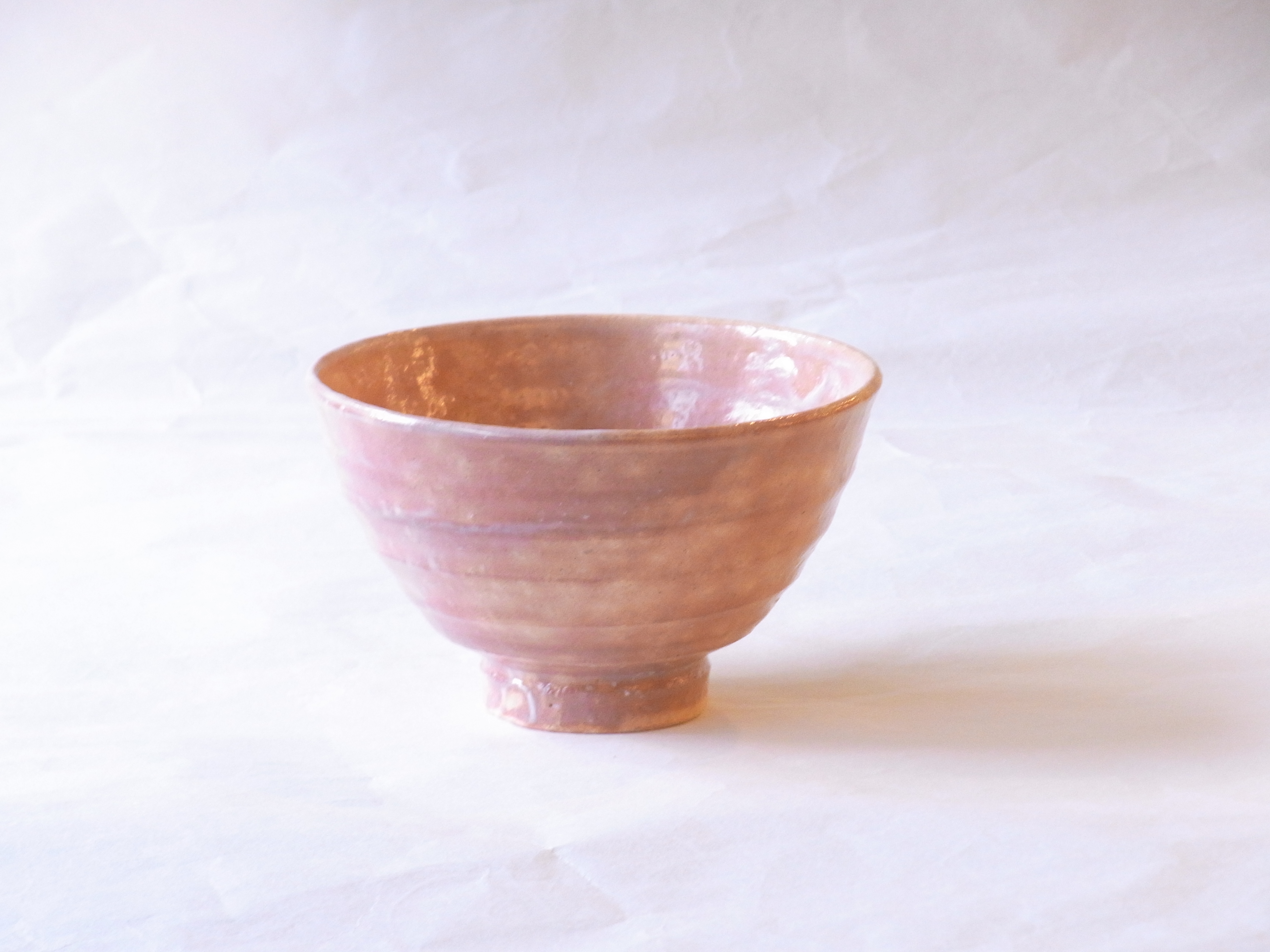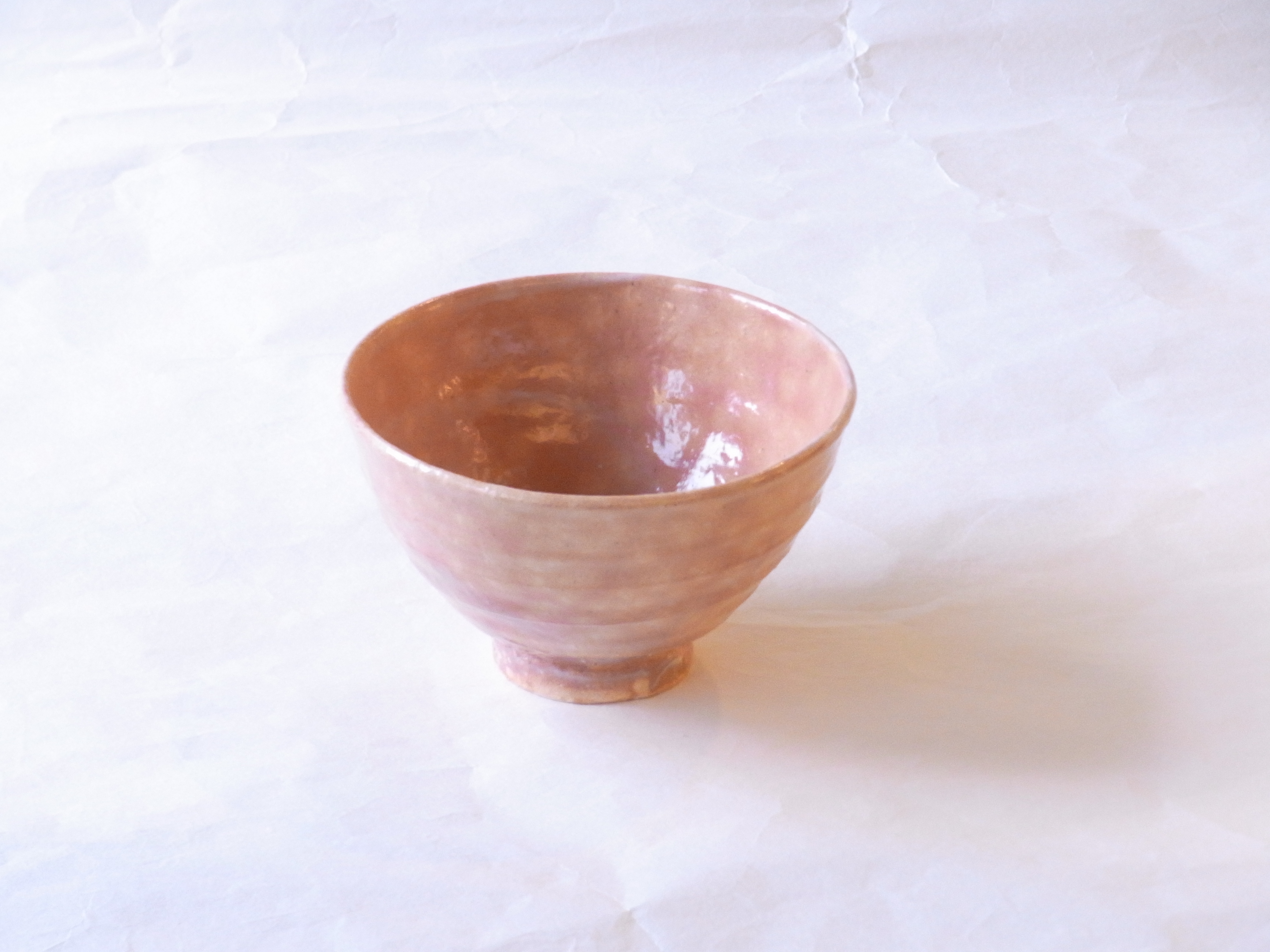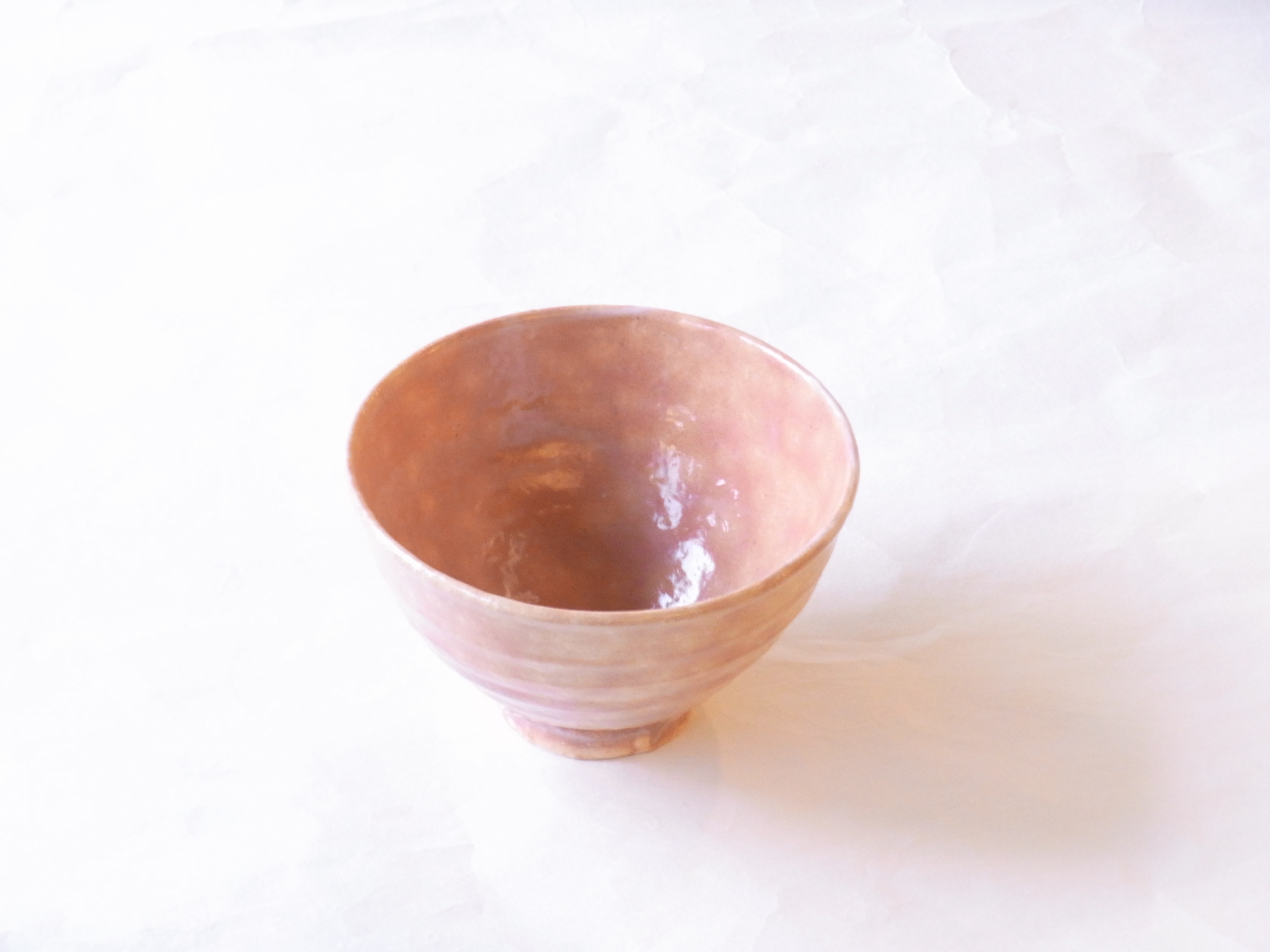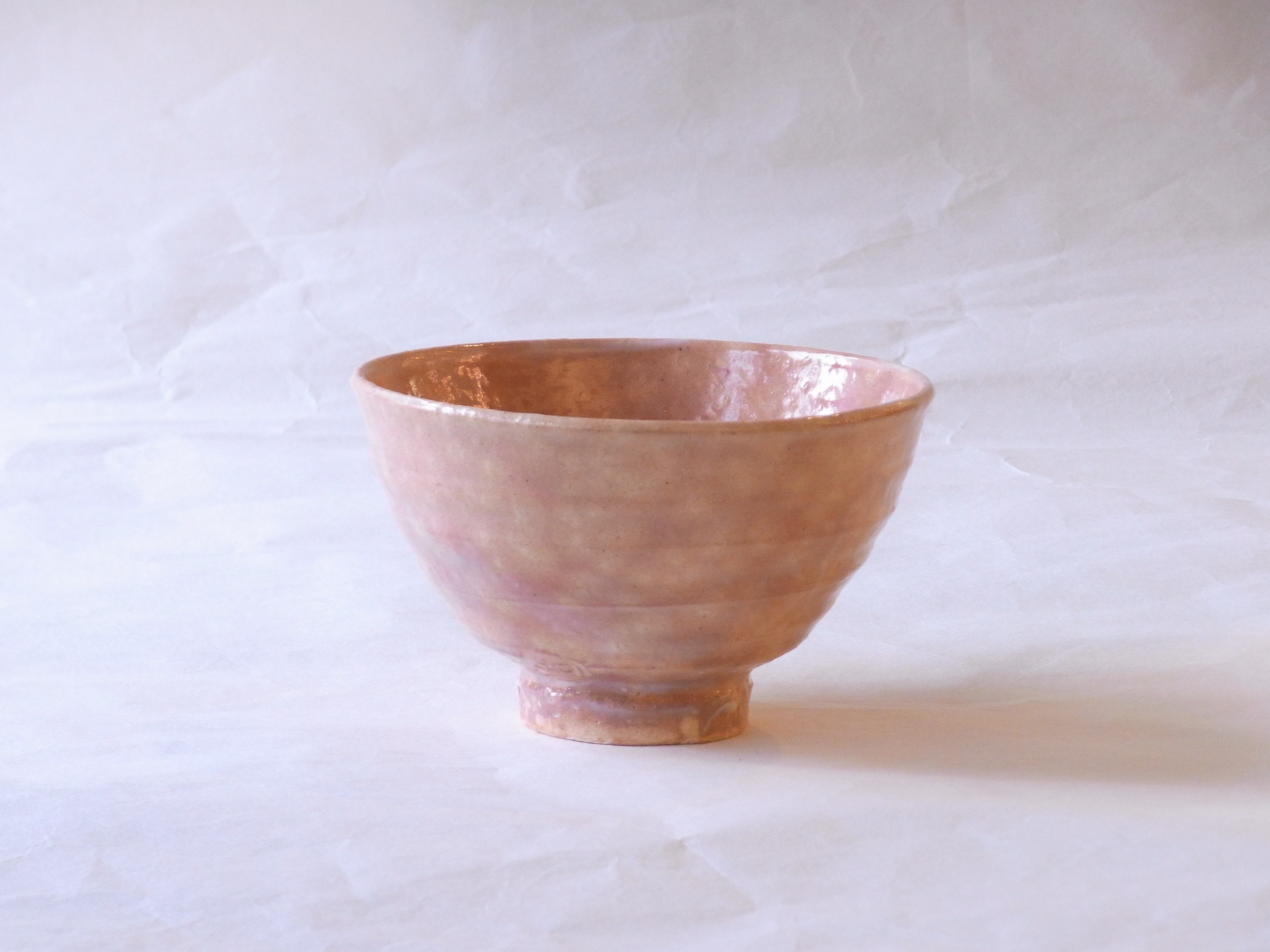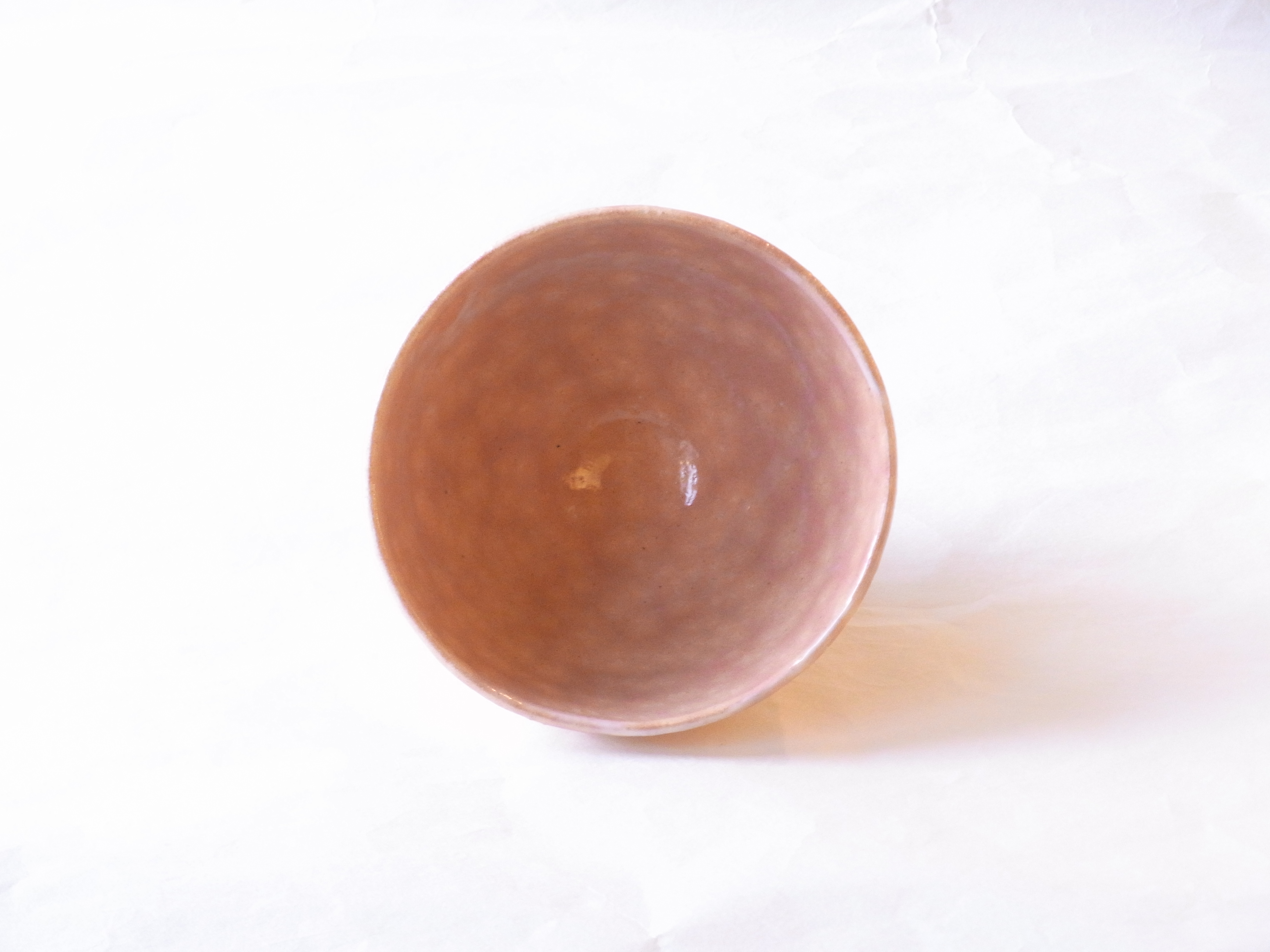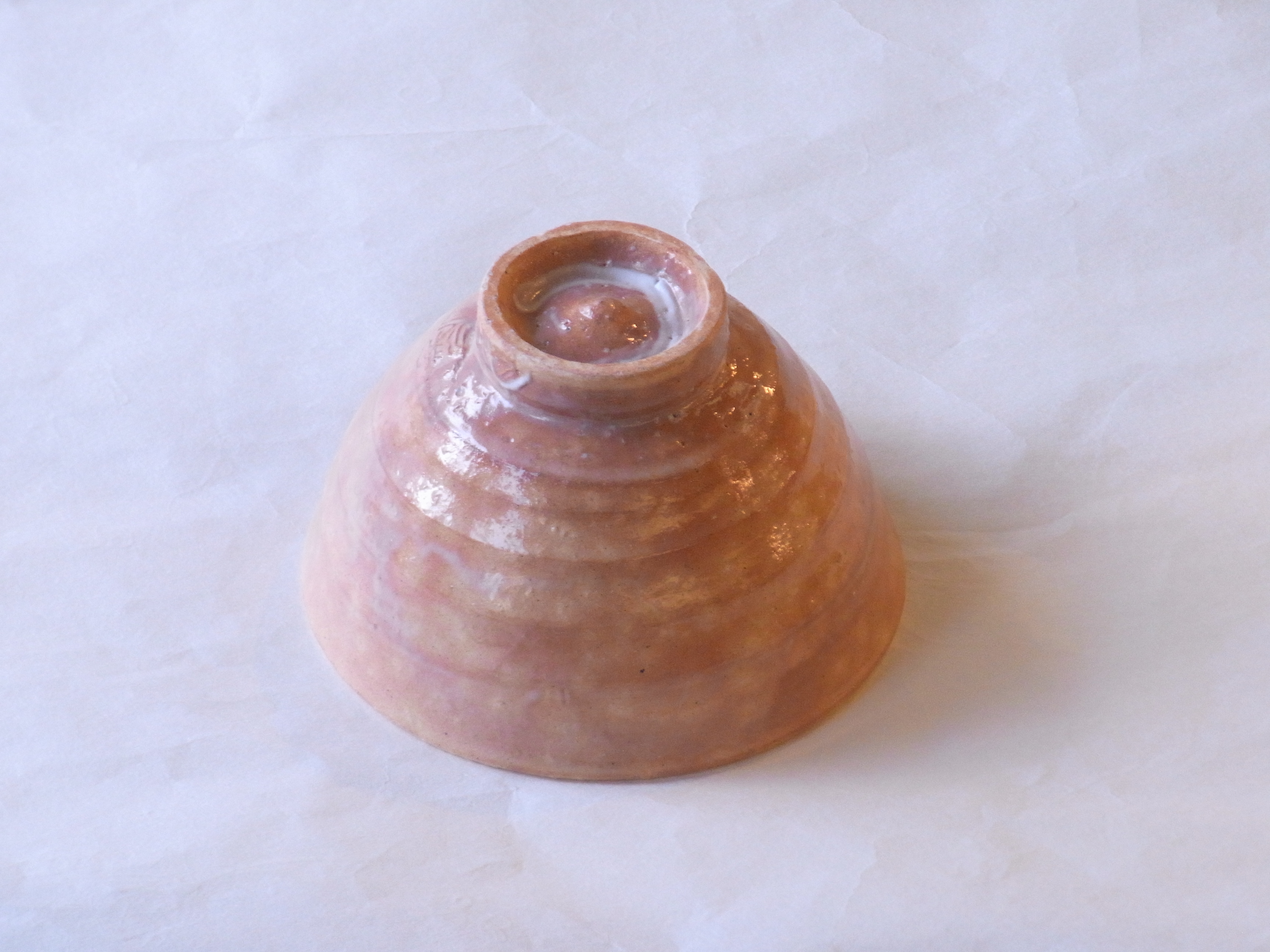萩焼から小松健 作の小井戸茶碗のご紹介です。
「井戸茶碗」とは、元々朝鮮茶碗の一種で李朝の比較的早い時期に
作られたとみられ、室町時代以後しきりに渡来した朝鮮茶碗の中でも
第一等の位に置かれ、「唐物茶碗の王者」とされています。
土は鉄分の多い荒目のもので、赤みを帯びています。
荒目の土を早いろくろで挽くため、ろくろ目が見られます。
釉掛けは茶碗の内外はもちろん、高台の内側までずぶ掛けにする
総釉掛けのため、高台の土を直接見れる部分がほとんどありません。
釉薬掛けの時に茶碗を摘みやすくする利便性から生じたとされる
高台は「竹の節高台」となっています。
「竹の節高台」とは抹茶碗の高台が竹の節のようになっているものをいいます。
高台の内側を削り、外側を削るうちにカンナが当たって、竹の節型になります。
井戸茶碗の約束の一つになっています。
削り出し高台で、高台内側をさらえるヘラが斜めに入るので
高台内の中央が渦を巻いたように高まっています。
この抹茶碗は、大井戸茶碗に比べて小ぶりで高台の低い
「小井戸」と呼ばれる茶碗で、主に薄茶で使われます。
全体にかなり赤みを帯びており、窯の中で炎が強くあたったかのような
焼成の激しさを感じます。
茶碗の内側は「御本」(器の肌に現れる点々とした赤みのある斑紋)が
よく出ています。
高台の部分には、器を釉薬につける時に付いた作家の指の跡が付いています。
小さな手にもすっぽりとおさまる、ちょうどいいサイズの抹茶碗です。
径 13㎝ 高さ 7.5㎝
It is an introduction of the Small well tea bowl made by Ken Komatsu from the skewer ware.
“Ido Chawan” is originally a kind of Korean tea bowl, at a relatively early time of the Li dynasty
It is thought to have been made, and it is in the Korean tea bowl which came to Japan frequently after the Muromachi period.
It is placed in the first place, and it is said to be “the king of the Karamono tea bowl”.
The soil is a rough thing with a lot of iron, and it is reddish.
Because the soil of the rough eye is ground with the early kurokuro, the potter’s eye is seen.
The hanging is made to the inside of the hill as well as the inside of the teacup.
Because of the total hanging, there is little part where you can see the soil of the hill directly.
It is said to have arisen from the convenience of making it easier to pick teacups at the time of glaze hanging.
The hill is “bamboo festival height”.
“Bamboo Festival Height” refers to the one that the height of the matcha bowl becomes like a bamboo section.
The inside of the hill is cut, and the canna hits while cutting the outside, and it becomes a section type of bamboo.
It is one of the promises of a well teacup.
Because the spatula which exposes the inside of the hill enters diagonally in the shaving height
The center of the hill is growing as if it was swirling.
This matcha bowl is small and low in height compared to The Oido tea bowl.
It is a tea bowl called “Koiido” and is mainly used in light tea.
It is quite reddish throughout, and it seems that the flame was strong in the kiln.
I feel the intensity of firing.
Inside the teacup is “Omoto” (a spot redspot that appears on the skin of the bowl)
It is well out.
The upper part is marked with the writer’s finger when the container is attached to glaze.
It is a matcha bowl of just the right size that fits completely in a small hand.
介紹小松健作小井茶碗。
“井茶碗”最初是一種韓國茶碗,在李朝相對較早的時候。
在韓國茶碗中,據說是經過的,在穆羅馬奇時代之後,它被認為是已經製作的
它被放在第一等位置,被認為是”唐杯之王”。
土壤是粗野的,富含鐵,是紅色的。
眼睛被看到,因為它在粗糙的土壤上迅速研磨。
當然,在茶杯的內部和外部,它掛在高臺內
由於總的釉料,幾乎沒有部分可以直接看到高地的土壤。
據說,這是由於方便,使茶葉碗更容易採摘時,釉料
高臺已成為”竹節高臺”。
“竹節高臺”是指綠茶碗的高臺與竹節一樣。
坎納擊中,而削減高臺的內部,並削減外部,成為竹的節型。
它已成為井茶碗的承諾之一。
在高處刮擦,因為暴露高臺內側的鏟子進入對角線
高地的中心正在上升,就像漩渦一樣。
與大井茶碗相比,這種抹茶碗體積小,高臺低。
茶杯被稱為”小井”,主要用於淺茶。
整個是相當紅,仿佛火焰在棺材裡強烈
我感受到了燒制的激烈程度。
茶碗的內部是”奧本”(在容器的皮膚上出現一個點的紅色斑塊)
我經常出去。
高處有作家的手指痕跡,他們把容器放在釉料上。
這是一個綠茶碗,大小恰到好處,完全適合小手。
介绍小松健作小井茶碗。
“井茶碗”最初是一种韩国茶碗,在李朝相对较早的时候。
在韩国茶碗中,据说是经过的,在穆罗马奇时代之后,它被认为是已经制作的
它被放在第一等位置,被认为是”唐杯之王”。
土壤是粗野的,富含铁,是红色的。
眼睛被看到,因为它在粗糙的土壤上迅速研磨。
当然,在茶杯的内部和外部,它挂在高台内
由于总的釉料,几乎没有部分可以直接看到高地的土壤。
据说,这是由于方便,使茶叶碗更容易采摘时,釉料
高台已成为”竹节高台”。
“竹节高台”是指绿茶碗的高台与竹节一样。
坎纳击中,而削减高台的内部,并削减外部,成为竹的节型。
它已成为井茶碗的承诺之一。
在高处刮擦,因为暴露高台内侧的铲子进入对角线
高地的中心正在上升,就像漩涡一样。
与大井茶碗相比,这种抹茶碗体积小,高台低。
茶杯被称为”小井”,主要用于浅茶。
整个是相当红,仿佛火焰在棺材里强烈
我感受到了烧制的激烈程度。
茶碗的内部是”奥本”(在容器的皮肤上出现一个点的红色斑块)
我经常出去。
高处有作家的手指痕迹,他们把容器放在釉料上。
这是一个绿茶碗,大小恰到好处,完全适合小手。
